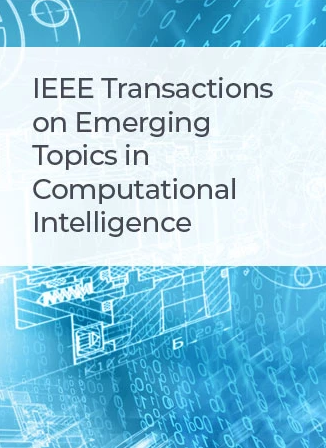Graph Contrastive Learning for Tracking Dynamic Communities in Temporal Networks
IF 5.3
3区 计算机科学
Q1 COMPUTER SCIENCE, ARTIFICIAL INTELLIGENCE
IEEE Transactions on Emerging Topics in Computational Intelligence
Pub Date : 2024-04-17
DOI:10.1109/TETCI.2024.3386844
引用次数: 0
Abstract
Temporal networks are ubiquitous because complex systems in nature and society are evolving, and tracking dynamic communities is critical for revealing the mechanism of systems. Moreover, current algorithms utilize temporal smoothness framework to balance clustering accuracy at current time and clustering drift at historical time, which are criticized for failing to characterize the temporality of networks and determine its importance. To overcome these problems, we propose a novel algorithm by跟踪时态网络中动态群落的图对比学习
时态网络无处不在,因为自然界和社会中的复杂系统都在不断演化,追踪动态群落对于揭示系统机制至关重要。此外,目前的算法利用时间平滑性框架来平衡当前时间的聚类准确性和历史时间的聚类漂移,但这种方法因无法表征网络的时间性和确定其重要性而饱受诟病。为了克服这些问题,我们提出了一种将非负矩阵因式分解和动态聚类检测对比学习相结合的新算法(jNCDC)。具体来说,jNCDC 通过将连续快照投影到共享子空间来学习顶点的特征,从而利用矩阵因式分解学习顶点的低维表示。随后,它构建了一个演化图,通过用历史时间的特征表示当前时间的顶点,明确衡量顶点之间的关系,为在顶点层面描述网络的动态特性铺平了道路。最后,图对比学习利用顶点的作用来选择正样本和负样本,从而进一步提高特征的质量。这些程序被无缝集成到一个总体目标函数中,并推导出优化规则。据我们所知,jNCDC 是第一个用于动态群落检测的图对比学习方法,它为当前的时间平滑性框架提供了一个替代方案。实验结果表明,jNCDC 在准确性方面优于最先进的方法。
本文章由计算机程序翻译,如有差异,请以英文原文为准。
求助全文
约1分钟内获得全文
求助全文
来源期刊

IEEE Transactions on Emerging Topics in Computational Intelligence
Mathematics-Control and Optimization
CiteScore
10.30
自引率
7.50%
发文量
147
期刊介绍:
The IEEE Transactions on Emerging Topics in Computational Intelligence (TETCI) publishes original articles on emerging aspects of computational intelligence, including theory, applications, and surveys.
TETCI is an electronics only publication. TETCI publishes six issues per year.
Authors are encouraged to submit manuscripts in any emerging topic in computational intelligence, especially nature-inspired computing topics not covered by other IEEE Computational Intelligence Society journals. A few such illustrative examples are glial cell networks, computational neuroscience, Brain Computer Interface, ambient intelligence, non-fuzzy computing with words, artificial life, cultural learning, artificial endocrine networks, social reasoning, artificial hormone networks, computational intelligence for the IoT and Smart-X technologies.
 求助内容:
求助内容: 应助结果提醒方式:
应助结果提醒方式:


